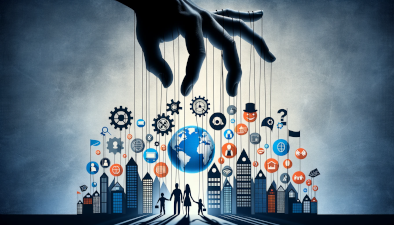Understanding ‘Fear Politics’ in a Nutshell
Fear politics is powerful because it directly appeals to basic human emotions, making it easier to manipulate public opinion and control societal actions. By invoking fear, leaders can justify extreme policies, consolidate power, and divert attention from other issues. This tactic taps into primal instincts for safety and security, influencing people more effectively than rational arguments or facts might.
Key Takeaways:
- Fear politics is effective in influencing and controlling public opinion by tapping into basic human emotions.
- It’s used strategically to justify extreme policies and consolidate power within governments.
- Recognizing and critically evaluating fear-based political strategies is crucial for informed decision-making and maintaining democratic values.
Table of Contents
- Fear in American Politics
- Fear vs Worry: How and Why it Happens
- Examples of Fear in Politics
- Contemporary Politics:
- USA PATRIOT Act.
- COVID-19 Pandemic: Fear, Policy, and Politics
- Digital Age and Fear Politics: The Role of Media and Online Platforms
- The January 6 Capitol Riot: Social Media's Role
- Immigration Debate
- Scare Tactics?
- Fear Appeal Throughout History and Today
Fear in American Politics
“Fear politics” refers to the strategy used by political leaders or groups. Its purpose is to inspire fear among the populace, often to achieve certain political goals or maintain power. Its use is a powerful tactic and there are several reasons why this is a powerful and effective method. The key to understanding why fear is frequently used is critical.
Fear vs Worry: How and Why it Happens
Fear is a Primal Emotion:

Use of Fear in Politics
Reacting without thinking it through. This instinctive reaction makes fear a powerful tool for shaping public opinion. Politicians using fear tactics might blow threats out of proportion or blame specific groups. Often positioning themselves as the only ones who can fix these exaggerated problems. Using this strategy helps them gain support and shift focus from other issues. Intending to justify actions that might not be okay under normal circumstances.
Fear Politics Works:
When people experience fear, they often react on instinct, not thinking about the future. This leads them to favor immediate, simple solutions, even if these might be harmful later on. As a result, people may accept reduced freedoms, increased surveillance, and the unfair treatment of certain groups. In crises, there’s a tendency to support less democratic, more authoritarian measures, which can weaken the typical checks and balances of a democracy.
Simplicity in Complexity:
Today’s world is complex and interconnected, making simple explanations and easy solutions appealing. More interestingly, the acceptance of a politician who offers a straightforward answer to our fears can seem more attractive. They appear to offer comfort, while actually providing misleading or distorted facts. Their apparent clarity and decisiveness can feel reassuring in the face of life’s complications.
Risks and Responsibilities:
Playing on fears can be dangerous. Increasing and deepening social divides, damage trust in institutions, and lead to lasting harm in society and politics. We, as citizens, need to stay alert, challenge fear-driven stories, and insist on policies based on facts, not fear. In a true democracy, decisions should come from informed discussions and real information, not from fear and manipulation.”
Examples of Fear in Politics
Increasing Danger in U.S. Politics:
The political scene in the United States has grown more threatening in 2023. Namely, in part of more violent talk and actions aimed at public officials. A key example is a Utah incident where FBI agents shot and killed a 74-year-old man. He had threatened to kill President Joe Biden. This event is a clear sign of how hostile speech is making U.S. politics more dangerous.
Threats Against Election Workers:
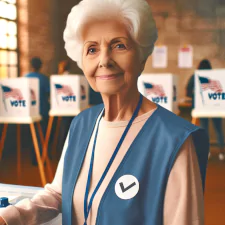
The situation worsens with threats to those running elections. These threats are largely fueled by former President Donald Trump’s false claims about the 2020 election being stolen. The effect of the threats is triggering a large number of election officials to think about quitting their jobs. Causing some election officials to leave their jobs over the threats. Showing a growing trend of political violence and its challenges for law enforcement, civil rights, and American democracy.
A Pessimistic Outlook Among Americans:
Beyond this, there’s a noticeable mood of worry and gloom among Americans in 2023. Many predict economic troubles, higher taxes, and a bigger national debt. About 90% expect political clashes within the U.S. This gloomy view extends to global matters, with many foreseeing international conflicts and a decline in America’s global influence.
Contemporary Politics:
Fear of Terrorism:
Post-9/11 Changes: Fear of Terrorism and Its Impact

A Shift Towards Security:
After the 9/11 terrorist attacks, the fear of terrorism drastically shaped America’s actions. The country adopted strong security measures and wide-reaching laws, significantly changing the national landscape.
Bush Administration’s Use of Fear Politics:
Fear vs Scare
The way President George W. Bush’s administration responded to 9/11 is a key example of fear politics in action. In those days of high fear and uncertainty, the U.S. government made major moves. They passed laws and set policies to boost national security. Unfortunately, this came with a trade-off, impacting some civil liberties.
These changes show how fear can drive governments to make swift, and sometimes sweeping, legislative decisions.”
One of the most significant pieces of legislation passed during this time was the
USA PATRIOT Act.
Uniting and Strengthening America by Providing Appropriate Tools Required to Intercept and Obstruct Terrorism Act of 2001.
This law vastly expanded the authority of U.S. law enforcement for the stated purpose of fighting terrorism.
It allowed for
- Enhanced surveillance of communications
- Greater leeway in conducting searches without warrants
- Eeased restrictions on foreign intelligence gathering within the United States.
Analyzing the Post-9/11 Response: Security, Rights, and Rhetoric
The PATRIOT Act’s Controversy:
Critics of the PATRIOT Act argue it went too far, infringing on civil liberties and privacy. Passed in a rush of fear and urgency after 9/11, it didn’t get the thorough check by lawmakers or the public debate it needed.
Creating the Department of Homeland Security:
Notably, a big step by the Bush administration after 9/11 was forming the Department of Homeland Security. This move combined various government agencies to strengthen the fight against terrorism. The result shows a shift towards prioritizing security in government actions.
Good vs. Evil Rhetoric:
The Bush administration often described the battle against terrorism as a fight between good and evil. This black-and-white way of talking about the issue heightened public fear and made people more open to accepting stricter security measures and sacrificing some freedoms for safety.
Justifying Wars with Fear:
The heightened fear of terrorism was also used to justify invading Afghanistan and Iraq. The Iraq invasion, especially controversial, is seen as an example of using fear to drum up support for military action. The administration’s false claims about weapons of mass destruction in Iraq played a big part in convincing the public and Congress to support the war.
The post-9/11 era under Bush’s leadership is a key example of how fear can influence politics. It shows how fear can sway public opinion and make it easier to pass laws and policies that might usually face more questioning and resistance. This time in history is crucial for understanding the balance between national security, civil liberties, and the impact of fear in shaping government policy.
COVID-19 Pandemic: Fear, Policy, and Politics
Fear vs Concern:

The COVID-19 pandemic showed how fear can lead to new policies, gathering support, or shifting blame. During this time, fear of politics greatly influenced how people saw the situation and how governments responded. The pandemic and its political aspects caused widespread anxiety about health and mortality.
The Double-Edged Sword of Anxiety:
This fear-driven anxiety had some positive outcomes, like the quick creation of vaccines. However, it also took a heavy toll on mental well-being, moral values, and economic conditions. The constant media and academic focus on infection rates, deaths, and fear of dying polarized public opinion.
Partisan Politics and COVID-19:
In the United States, political division played a big role in dealing with the pandemic. People’s political leanings often dictated their actions and beliefs about COVID-19 more than the actual virus spread or personal characteristics. These political divides shaped public health decisions like lockdown timings, social gathering bans, and mask rules.
Impact of Political Polarization:
The differences in how political groups approached the pandemic led to varied impacts on health and the economy. This polarization changed how individuals responded to the pandemic, affecting their level of fear, willingness to follow social distancing and mask rules, and opinions on the economic and social disruptions.
The Negativity Effect in Politics:
The pandemic also brought to light a common political pattern: the ‘negativity effect’ or ‘negativity bias.’ This means that negative events and feelings often have more impact than positive ones. Historically, this bias has caused governments to expand their powers in crises, like with the COVID-19 pandemic.
Exploitation of Fear for Policy Changes:
Politicians and media can use this negativity bias to put in place ‘temporary’ measures that often don’t completely go away, leading to a long-term increase in government size and power. This trend, seen in past wars and economic crises, was also evident in the COVID-19 pandemic. Measures like lockdowns, initially meant to be short-term, were expected to have enduring effects due to the strong support they garnered for new government programs.
Digital Age and Fear Politics: The Role of Media and Online Platforms
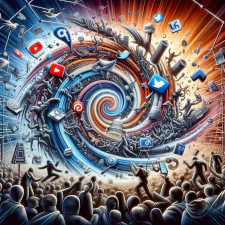
Fear vs Caution
Amplifying Fear Through Technology: Today’s technology, especially social media, plays a big role in boosting fear politics. It’s not just about spreading information fast; it’s also about how it affects political divides and the spread of false information.
Social Media’s Impact on Polarization: Platforms like Facebook, YouTube, and Twitter might not have started political polarization, but they definitely make it worse. Their design, which aims to keep users hooked, often ends up promoting content that divides people. This leads to more extreme political views, damaging democratic values and even encouraging violence based on party lines.
Social Media and Partisan Hostility: Despite some companies denying it, a lot of experts and research show that social media use increases political hostility. The algorithms these platforms use to keep users engaged often highlight content that stirs up fear or anger about other political groups, making polarization worse. This effect is even stronger among groups of users who already share similar views, where divisive content spreads more quickly and has a bigger impact
The January 6 Capitol Riot: Social Media’s Role
Social Media in Political Chaos: The riot at the U.S. Capitol on January 6 was a stark example of how social media can fuel political unrest. Investigations into the riot revealed that false claims about the 2020 election spread rapidly on platforms like Facebook and Twitter. These platforms’ algorithms may have even helped in spreading misinformation and extreme views. After the riot, federal prosecutors used a lot of evidence from social media, where the event was organized.
Broader Causes of Polarization: While social media and technology play a big part in political divides, they’re not the only reasons. Other factors, like changes in political party dynamics, the growth of highly partisan news sources, and increasing racial tensions, have also contributed to the recent rise in divisiveness.
The Significant Impact of Technology and Social Media: Despite these other factors, we can’t ignore the powerful role of technology and social media. They not only help spread divisive views but also amplify them. This makes them key areas to watch for maintaining the health of democratic societies.”
Immigration Debate
Fear of Crime
Immigration in the U.S.: A Complex Topic: Immigration in the United States is a complicated issue. It’s influenced by many things like changes in laws, what politicians say, and actual events happening around the world. In 2023, immigration is a hot topic in the U.S., with many debates and changes in policies, causing a lot of attention and worry from different groups.
The U.S.-Mexico Border Situation: A major area of focus is what’s happening at the U.S.-Mexico border. There’s been an unprecedented increase in the number of people displaced globally, leading to a record number of individuals coming to the southern U.S. border.”
Immigration In The United States
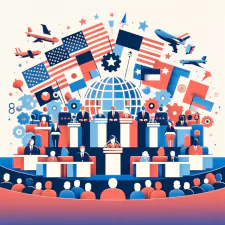
A Hot Topic in Politics: The situation at the U.S.-Mexico border has become a key issue in political discussions. Different political groups have their views and solutions. The Biden administration’s approach to immigration has been a mix: they’ve tried to both limit and create legal ways to enter the U.S. This includes increasing humanitarian parole and temporary protected status. But these policies have faced criticism, especially from Republicans who want tougher border controls and stricter immigration rules, using fear tactics.
Transforming Migrants into Political Tools: The fear around immigration is also driven by political talk and policies that turn migrants into tools for political gain. Public opinion on immigration is changing: fewer Americans now see immigrants as a vital part of the national identity, and more support strict measures, like building a wall on the southern border.
Impact of Anti-Immigrant Rhetoric and Policies: This shift in how people think may be influenced by anti-immigrant speech and policies. For example, the use of Title 42, a public health law used during the COVID-19 pandemic to send immigrants away. Legal experts and advocates argue that using policies like Title 42 isn’t based on strong scientific reasons and harms migrants. It increases their risk of facing dangers like organized crime and makes it harder for them to legally seek asylum.
Scare Tactics?
Politicians have several reasons for making the public feel afraid, each serving a different purpose:
Fear for Control and Compliance:
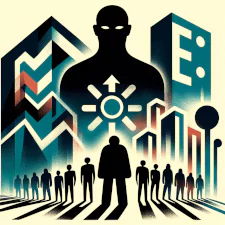
Fear is a big motivator. When people are scared, they often look for someone to protect and guide them. Politicians can use this to their advantage. If they make people fear a certain threat (real or not), they can present themselves as the solution. This often results in more support for those politicians or parties that promise safety.
Fear as a Distraction:
Politicians also use fear to shift attention away from their own problems or unpopular policies. By focusing on something that scares people, they can divert public attention from other important issues.
Justifying Extreme Actions:
In times of fear, people might accept extreme measures they usually wouldn’t, like losing some freedoms, more surveillance, or harsh policies. Politicians often use fear to make these actions seem necessary for everyone’s safety.
Creating Divisions for Support:
By playing on fears, politicians can create divisions among people and make their supporters more loyal. They might use fear to portray opponents or certain groups negatively, creating an ‘us vs. them’ situation that brings their supporters closer together.
Using Fear in Elections:
Fear is also a tool in elections. Campaigns use fear to get people to vote, either by showing the dangers of electing their opponents or by saying that they’re the only ones who can handle scary situations. This strategy makes the election seem more urgent, encouraging more people to vote.
Use of Fear to Control Society:
On a larger scale, a society that’s always afraid is often easier to control and less likely to question things. Politicians who keep a level of fear in the public might face less scrutiny, as people are more focused on their immediate fears than on long-term issues in governance.”
Fear Appeal Throughout History and Today
Fear politics has been a part of our history for a long time, changing and adapting with society, technology, and politics. Every period in history shows different ways fear has been used as a tool to gain influence, hold onto power, and shape society’s stories and actions.
From the distant past to now, using fear in politics is a constant theme. We’ve seen it in ancient civilizations and in modern times. The use of fear ranges from ancient rulers to current issues like the 9/11 aftermath, the COVID-19 pandemic, digital media’s role in politics, and the complex debates around immigration.
Each of these situations shows how fear is strategically used. Whether it’s to control people, distract them from other issues, justify extreme measures, create divisions for political support, or influence elections, fear remains a powerful force in politics. It’s used to shape public opinion, direct attention, and often, to tighten a leader’s grip on power.
In summary, the use of fear in politics is an enduring part of how societies are governed. It’s a thread that runs through the fabric of history, highlighting the ongoing and significant impact of fear in shaping political narratives and controlling societies.”

